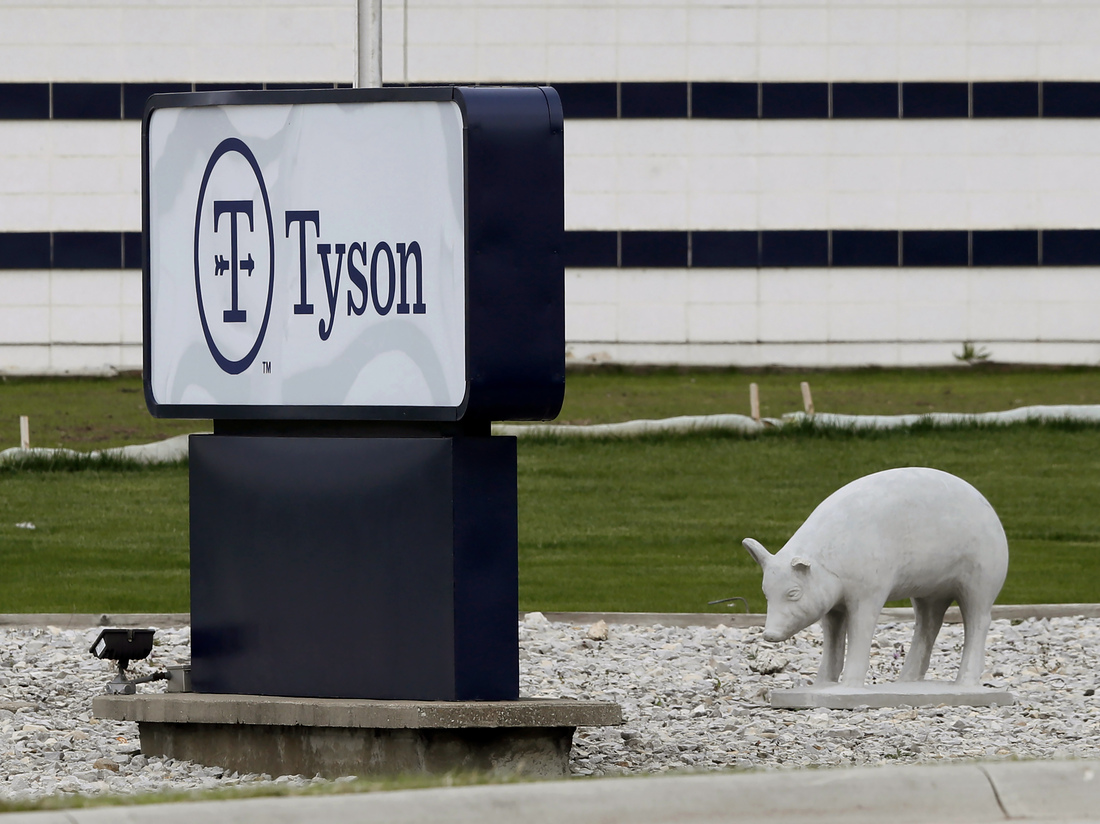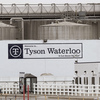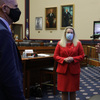U.S. Continues To Lag In COVID-19 Workplace Safety, Former OSHA Official Says : Coronavirus Updates : NPR

A plant in Waterloo, Iowa, is one of several Tyson Foods facilities that experienced severe outbreaks of the coronavirus among workers last year.
Charlie Neibergall/AP
hide caption
toggle caption
Charlie Neibergall/AP

A plant in Waterloo, Iowa, is one of several Tyson Foods facilities that experienced severe outbreaks of the coronavirus among workers last year.
Charlie Neibergall/AP
As COVID-19 deaths and illnesses mount, essential workers — who are denied the chance to work from home — are struggling to stay safe. And it’s far from clear if the federal government is doing enough to protect them, according to a former top federal workplace safety official.
The Occupational Safety and Health Administration official, Deborah Berkowitz, says the Trump administration has neglected COVID-19 safety at meatpacking plants and many other workplaces.

“What keeps me up at night is that nine months after the beginning of the pandemic, that there are still no specific requirements, that as a nation, every business that has employees has to implement to mitigate the spread of COVID-19,” said Berkowitz, a former chief of staff and senior policy adviser at OSHA under President Obama. She’s currently the worker health and safety program director for the National Employment Law Project.
In an interview with NPR’s Morning Edition, Berkowitz said she guesses OSHA should have done safety 10,000 to 20,000 inspections since March and instead has done only a few hundred. “OSHA has been AWOL,” she said.
In comment to NPR, OSHA Principal Deputy Assistant Secretary Loren Sweatt says Berkowitz pulled “isolated alleged incidents out of context.” The agency, Sweatt said, has “issued nearly 300 COVID citations and kept hundreds of thousands of workers safe on the job.”
Below are highlights of the interview, edited for length and clarity.
Interview Highlights
Last spring, we heard a lot about viral outbreaks in workplaces like meatpacking plants, and the Trump administration actually intervened back then. Those employees became essential workers and companies said they would actually institute precautions and restrictions. Did they do that on any scale or did we take our eye off the ball?

Oh, this administration totally took its eye off the ball and completely failed to protect workers. The secretary of labor under President Trump, Eugene Scalia, decided there would be no requirements and just let employers do what they want to do voluntarily. Some of the plants put in these flimsy plastic barriers between workers where there’s like 500 workers in a big room working shoulder to shoulder that even the CDC said to them does not protect workers unless you have social distancing six feet apart. And I think what you saw, which is really stunning, is you saw the administration come in to protect an industry so that they wouldn’t have to protect workers. I mean, time and time again, CDC weakened its guidance when the meat industry asked them to so they could keep making a profit. But it spread like wildfire.
What does OSHA need to do right now to make workplaces safe from the spread?
OSHA has been AWOL. I helped run that agency for six years. And at the beginning of the pandemic in the middle of March, when I got calls from meatpacking workers, health care workers, I said, just call OSHA. And OSHA actually told workers there’s nothing we can do. We’re not inspecting. Usually, OSHA, during the last nine months, would have done 10,000, maybe 20,000 inspections. They did a couple hundred.

Sounds like you’re waiting for this new presidential administration for any changes to take place and therefore a new OSHA. But time is of the essence. What do workers need right now?
Workers really need to have employers follow the basic CDC guidance of social distancing, masks, notification when there are cases. And also they need to be able to speak up when they know that there are unsafe conditions and not be retaliated against. The bottom line, I think what you find out in this pandemic and the public should realize is worker-safety rights right now are really weak. And maybe this pandemic will cause us to rethink this ability of workers to protect themselves, which right now they really don’t have.
When a vaccine arrives for essential workers, what other hurdles will they have to overcome?
Because you had a president that downplayed the virus, that downplayed the seriousness of the virus, that made up how you cure this virus, there’s huge distrust now in the federal government and what they’re advising. And so I do think that one of the first things the Biden-Harris team has to do is to launch a huge campaign to build the public’s trust, but also to work with the states to and to develop better mechanisms to deliver this vaccine to essential workers.
Nina Kravinsky and Jan Johnson produced and edited the audio version of this story. Avie Schneider produced for the Web.
